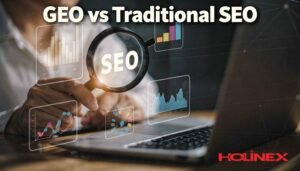As a digital marketer, you likely spend a significant amount of time driving traffic to your website. However, simply getting visitors to your site is not enough. The key to success is turning those visitors into customers through strategic follow-up marketing. One of the most effective ways to do this is through remarketing campaigns. Remarketing, also known as retargeting, allows you to reconnect with visitors after they leave your website by showing them targeted ads as they browse the web.
In this article, you’ll learn the basics of how remarketing works within Google Ads. We’ll explore how to set up a remarketing campaign, the different types of remarketing lists you can create, how to choose your target audience, best practices for creating effective ads, and how to analyze the performance of your remarketing efforts. Implementing a thoughtful remarketing strategy is a proven way to generate higher conversion rates and increase revenue. Read on to discover how you can leverage remarketing to reconnect with your website visitors and turn more of them into customers.
Table of Contents
ToggleWhat Is Remarketing in Google Ads?
Remarketing in Google Ads allows you to show ads to people who have already visited your website. By tagging visitors with a remarketing cookie, you can target ads to them as they browse other websites and apps.
- What Is a Remarketing Cookie? A remarketing cookie is a small piece of code placed on your website that allows Google Ads to track visitors. The cookie links a visitor’s web activity to your Google Ads account so you can show ads to that visitor later on.
- How Does Remarketing Work? Once a visitor leaves your website, the remarketing cookie lets Google detect when that visitor goes to other websites or uses apps that show Google Ads. Your ads can then be shown to that visitor again, reminding them of your business or encouraging them to return to your site.
- Why Use Remarketing? Remarketing helps you reconnect with visitors who have already shown interest in your business. It allows you to keep your brand in front of them and bring them back to your website. Studies show that remarketing can lift sales and reduce wasted ad spend on uninterested visitors. Overall, remarketing helps ensure that your ads are shown to the most likely to convert.
By using remarketing in Google Ads, you can maximize your ad budget by targeting visitors who are already familiar with your business. Remarketing helps turn casual visitors into loyal customers and keeps your brand at the front of their minds.
How Remarketing Works
Remarketing allows you to reconnect with visitors who have already shown interest in your website. It works by using cookies to track visitors when they leave your site and then displays your ads to them as they browse other websites.
To set up remarketing in Google Ads:
- Enable remarketing in your Google Ads account. This allows Google to collect data about visitors to your website.
- Add a remarketing tag to your website. This tag places a cookie on visitors’ browsers which allows Google to track them. You can install the tag yourself or have a web developer do it for you.
- Create remarketing lists. These lists segment your audience based on their on-site behavior like how long they were on your site or what pages they viewed. You can make separate lists for high-value visitors.
- Design remarketing ads. Create text, image, and video ads specifically geared toward visitors who have expressed interest in your business. Mention they visited your site and offer them a special promotion to drive them back.
- Set a remarketing budget and schedule. Decide how much you want to spend on remarketing and choose where and when the ads will run. Your ads will then be displayed to members of your remarketing lists as they browse other websites and apps.
Remarketing is an effective way to re-engage past visitors and keep your business at the front of their minds. When done right, it can significantly impact your conversion rates and return on investment.
Setting Up a Remarketing Campaign in Google Ads
Enabling Remarketing in Your Google Ads Account
To set up a remarketing campaign in Google Ads, you must first enable remarketing in your account.
- Sign in to your Google Ads account and click the tools icon.
- Select ‘Audiences’ from the menu.
- Click ‘Remarketing’ and toggle the switch to turn it on. This will enable remarketing for search, display, and video campaigns.
Creating Remarketing Lists
Remarketing lists allow you to target ads to people who have visited your website. You can create lists based on pages visited, transactions, or other on-site behavior.
- To make a list, click ‘+ New list’ and choose a list type: Auto-created (based on page views), Custom combination (combine multiple lists), or Imported (from a CSV file).
- Name your list something descriptive and choose the pages, products, or other on-site actions that will add people to the list.
- Select a membership duration for how long people will remain on the list. Most advertisers use 30 to 540 days.
Bidding and Targeting
Once you have remarketing lists, you can target ads to people on those lists through search, display, and video campaigns.
- In your campaign settings, select the remarketing lists you want to target under ‘Audiences’. Choose ‘Target and bid’ to set a higher max CPC for people on your lists.
- You can also adjust bids at the ad group or keyword level for even more control. Typically, you will bid higher for remarketing since those people have already shown interest in your business.
- Use remarketing to keep your brand in front of previous visitors and encourage them to come back to your website to complete a purchase or other conversion. With the proper setup and bidding, remarketing can be an effective way to increase sales and ROI.
Optimizing Your Remarketing Campaign for the Best Results
To optimize your remarketing campaign, focus on the following best practices:
Tailor Your Ads to Different Audiences
Create separate ad groups for different types of visitors to your site. For example, have one ad group for those who visited product pages and another for blog readers. This allows you to show relevant ads to each audience.
Adjust Your Bidding Strategy
Increase your bids for audiences that are more likely to convert, such as those who visited your product pages or added items to their cart. Lower bids for general visitors. This helps you get the most from your remarketing budget.
Use Dynamic Remarketing
If you sell products, use dynamic remarketing to show visitors ads featuring the actual products they viewed. This highly targeted approach has been shown to increase click-through and conversion rates.
Optimize for Conversions
Once your campaign is running, analyze the performance of each ad group and make changes to improve your key metrics like click-through rate (CTR), conversion rate, and cost per conversion. Consider A/B testing different ads, changing images or copy, adjusting bids, or removing poorly performing ad groups.
Add Remarketing Lists
Create separate remarketing lists for visitors who have shown purchase intent, such as those who started a checkout process or added items to their cart. You can then tailor your ads and bidding specifically to these audiences to increase the likelihood of recovering abandoned sales.
Following these best practices will help you get the most out of your remarketing campaigns by showing the right ads to the right people at the optimal times. Continually optimizing based on performance data will enable you to improve results over time and achieve a high return on your investment.
Guide readers through the process of setting up remarketing campaigns and creating tailored ad experiences
What is Remarketing?
Remarketing, also known as retargeting, is a form of online advertising that allows you to show ads to people who have already visited your website. Once someone visits your site, a cookie is placed on their browser that allows you to continue targeting them with your ads as they browse other websites. This helps to keep your brand and products at the front of their mind and encourages them to come back to your site.
Setting Up a Remarketing Campaign
To set up a remarketing campaign in Google Ads, follow these steps:
- Enable remarketing in your Google Ads account. This allows Google to collect data and create audiences for your ads.
- Create your remarketing lists. These lists determine who will see your ads and can be based on pages visited, transactions, time spent on site, etc. You can make separate lists for different types of visitors.
- Design your ads. Create text, image, and video ads tailored to your remarketing audiences. Mention that the viewer has recently visited your site to grab their attention.
- Choose where to show your ads. Select websites, apps, and YouTube channels related to your business where your ads may be shown. You can also choose to show ads on Google’s Display Network which includes over 2 million websites and apps.
- Set a budget and start the campaign. Decide how much you want to spend each day to reach your remarketing audiences. Once the campaign is running, you can optimize it by adjusting bids, audiences, ads, and placements to improve performance.
- Analyze the results and make changes. Check how your ads are impacting site traffic, conversions, and sales. Make changes to better target your most valuable audiences and improve your return on investment.
Remarketing is a highly effective way to keep your business at the top of customers’ minds and drive them back to your website. With some time and testing, you can create a successful remarketing campaign in Google Ads.
Share tips for optimizing remarketing campaigns to increase conversions and improve brand recall
Optimize Your Remarketing Campaign for Conversions
To increase conversions from your remarketing campaigns, focus on relevance and value.
- Tailor your ads to people’s browsing history and interests. Show products or services they viewed to spark their memory and interest.
- Offer special discounts or promotions exclusively for people who visited your site. This gives them an incentive to return and make a purchase.
- Keep your messaging consistent across channels. Use the same color scheme, fonts, and branding in your ads as on your website so people instantly recognize you.
- Make it easy for people to convert by prominently featuring buttons like “Shop Now” or “Learn More” in your ads.
- Track your key performance indicators like click-through rate, conversion rate, and cost per conversion to see what’s working and make changes to underperforming ads.
Improve Brand Recall with Remarketing
To keep your brand at the top of people’s minds, use remarketing to stay visible after they leave your website.
- Run ads for at least 2 to 4 weeks after someone visits your site. Repeat exposure over time strengthens memory associations with your brand.
- Use eye-catching images, videos, or animations in your ads to capture attention. Dynamic visuals are more memorable than static images alone.
- Include your company name, logo, and tagline prominently in all your ads. This reinforces your brand identity and key messaging with every impression.
- A/B tests different versions of your ads to see which ones resonate most with your audience. The ads people interact with and recall the most are the most effective at building brand awareness.
Optimizing your remarketing campaigns and improving brand recall takes continuous testing and refinement. But by providing value, staying visible, and reinforcing your brand, you can turn more website visitors into lifelong customers.
Optimizing Landing Pages for Google Ads: Boosting Conversions and Quality Scores
Optimizing Landing Pages
To boost conversions and Quality Scores in Google Ads, focus on optimizing your landing pages. A landing page is the page a user arrives at after clicking your ad. It should be tailored to match the ad and provide a clear path for the user to convert.
An optimized landing page:
- Has a clear call-to-action, like “Sign Up Now” or “Learn More”. Place this prominently at the top of the page.
- Matches the ad copy and visuals. Use the same headline, images, and messaging to create a cohesive experience for the user.
- Loads quickly. A slow-loading page frustrates users and harms conversion rates. Compress images and minimize redirects.
- Is mobile-friendly. With more searches happening on mobile devices, your landing page must display well on smaller screens.
- Contains relevant and original content. Provide useful information to build trust and keep the user engaged. Duplicate or thin content is penalized.
- Has an easy-to-navigate design. Include clear headings, limit distractions, and make calls to action obvious. Don’t overwhelm the user.
- Is optimized for search. Use keywords in page titles, URLs, headings, and content. This also helps boost rankings in search results.
- Provides social proof like reviews or testimonials. Build credibility by showing how you’ve helped other customers.
- Has integrated analytics to track key metrics like bounce rate, time on page, and conversions. Monitor how users interact with your landing page and make improvements.
Optimizing your landing pages is key to getting the most out of your Google Ads campaigns. Put in the work to create dedicated landing pages and you’ll see higher Quality Scores, lower costs per conversion, and an improved return on your investment.
FAQ: Common Questions About Remarketing in Google Ads
What is remarketing in Google Ads?
Remarketing in Google Ads allows you to show ads to people who have already visited your website. By placing a remarketing tag on your site, you can build an audience of visitors to target with ads as they browse other websites and apps. This helps to keep your brand and products at the front of their minds, increasing the likelihood of them returning to your site and converting.
How does remarketing work?
When someone visits your website, the remarketing tag places a cookie in their browser that lasts for up to 540 days. This cookie allows Google to identify that person as having visited your site. Your ads may be shown to them as they browse other websites and apps in the Google Display Network. You can choose to target all website visitors or create specific audiences based on pages viewed, transactions, time spent on site, and more.
Why use remarketing?
Remarketing provides several benefits:
- Targeted reach: You can reach visitors who have expressed interest in your products or services.
- Higher conversion rates: Remarketing ads have a 4x higher click-through rate and a 50% lower cost-per-conversion than regular display ads.
- Maximized ad spend: Your budget is spent showing ads to people already familiar with your brand instead of new audiences who may not convert.
- Increased brand awareness: Repeated exposure to your ads keeps your brand at the top of visitors’ minds and strengthens brand recall.
Remarketing is a powerful way to re-engage past visitors and drive them back to your website. When used effectively, it can significantly impact your conversion rates and return on investment.
Conclusion
As you have learned, remarketing is a powerful tool to keep your brand in front of interested audiences and drive them back to your website. By implementing remarketing in Google Ads, you can stay connected with people who have already shown interest in your product or service. Remarketing helps combat the problem of website visitors leaving and never returning by keeping your brand top of your mind. The key is to create eye-catching ads that capture attention and encourage action. With some time and testing, you’ll determine the right mix of ad copy, images, and calls to action to optimize your remarketing campaigns. Remarketing is a marketing strategy that should be in every digital advertiser’s toolkit. Put it to work for your business and start re-engaging past website visitors today.


































